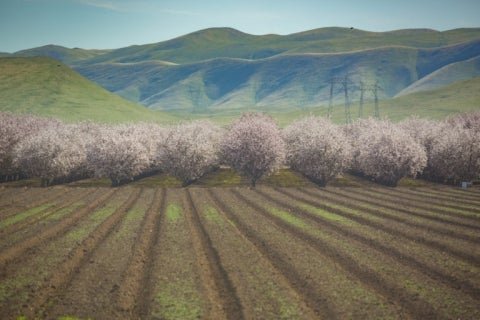Nearly one-fifth of the world’s population lives in a stressed water basin where the next climate change-driven incident could threaten access to an essential resource for agriculture, industry and life itself,
according to a new paper co-authored by a Yale scientist.
Writing in the journal
Nature Sustainability, an interdisciplinary team that includes
Julie Zimmerman, professor of green engineering at the Yale School of Forestry & Environmental Studies (F&ES), analyzed trends in global water usage from 1980 to 2016. They focused particularly on so-called inflexible consumption, the curtailment of which would cause significant financial and societal hardship. Those uses include irrigating perennial crops, cooling thermal power plants, storing water in reservoirs, and quenching the thirst of livestock and humans.
For the study, the team of scientists, led by
Yue Qin of the University of California, Irvine (UCI), constructed a water stress index that takes into account the scarcity, flexibility and variability (a comparison of annual runoff to storage capacity) of global supplies.
Evaluating watersheds on six continents, they found numerous hot spots — places where a drought or heat wave could put a strain on reserves — as well as numerous chances to conserve resources through new technologies and better management practices.
According to the study, the top 10 percent of the most stressed river basins support about 19 percent of the world’s population, 19 percent of thermal electricity generation and one-third of irrigated agricultural production. In addition, the researchers discovered a significant increase in water stress for the worst-impacted regions over the 37-year study period.
“Many studies evaluating water scarcity have mainly centered on the share of the available supply being consumed by humans, but this ignores the fact that some uses are more flexible or productive than others,” said Qin, a postdoctoral scholar in Earth system science at UCI. “By looking at how water is actually used, we can begin to see what water is really difficult to do without and if there are any opportunities for savings in other areas.”
In some ways the study is an extension of existing research on where carbon is embedded in the global energy infrastructure, said Zimmerman, a co-author of the paper. That research provided important insights into where there might be flexibility to reduce greenhouse gas emissions in the future, she said; why not do the same with water?
“If we’re worried about water efficiency we have to know where water might be available to achieve savings,” she said. “So this study asked that question: based on where capital is already embedded — where infrastructure is cooked into the global economy — where are those opportunities? Because we should be focusing there and not on places where we can’t make changes.”
“Given the limited political capital and resources when you’re developing new technologies and new policies, where do you focus those efforts for the most potential benefit?”
The study starts to raise the question on the path forward, and the linkages between energy and food and water, Zimmerman said.
“We can’t solve these problems in isolation,” she said. “Moving to renewable energy, for example, is going to have a water cost associated with it. So this study reinforces the linkages between these systems and why we need to be holistic in our approaches.”
 <div> <div> During a prolonged drought, annual crop fields can be left fallow without causing lasting economic damage, but almond groves, such as these in California’s Central Valley, require consistent irrigation to stay alive. UCI researchers paid special attention to such flexible and inflexible water uses in a new study published in Nature Sustainability.</div></div>
<div> <div> During a prolonged drought, annual crop fields can be left fallow without causing lasting economic damage, but almond groves, such as these in California’s Central Valley, require consistent irrigation to stay alive. UCI researchers paid special attention to such flexible and inflexible water uses in a new study published in Nature Sustainability.</div></div>